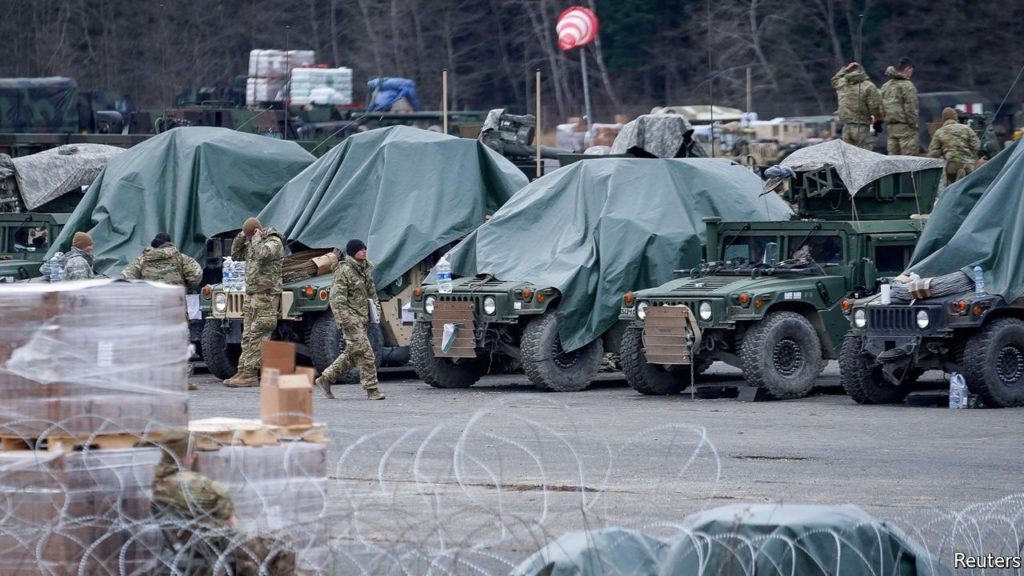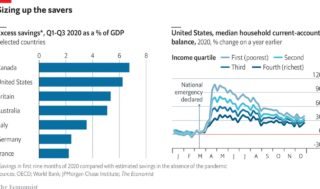
PRZEMYSL — POLAND HAS long warned its Western partners about the risk of Russian aggression in Ukraine, and indeed beyond, and the need to anchor its neighbour in NATO and the EU. Today, as a result of Russia’s invasion of Ukraine, the country is on the frontline of a potentially explosive conflict. The role it seems to play is as important as it is dangerous. Poland is fast becoming the lynchpin of the Western effort to defend Ukraine and deter Russia, a role that exposes it to considerable danger at the same time as it is playing principal recipient of the most extensive and rapid movement of refugees in Europe’s post-war history.
Hundreds of Stinger missiles, Javelin anti-tank weapons and other munitions have been pouring into Ukraine, through Poland and Romania, as part of America’s $350m package to assist the besieged country. Pentagon officials say that most of the weapons have already reached Ukraine. America has also proposed that Poland supply Ukraine with its own MiG-29 fighter jets, and receive American F-16s in exchange, according to Antony Blinken, the secretary of state. So far, Polish officials say they will not be sending warplanes to Ukraine, though there are reports that they may be supplied in unassembled form.
People are making their way across the border as well. Most of the world’s attention has been on the 1.6m Ukrainians who have escaped abroad since the start of the war, including the 1m refugees who have reached Poland. But many are heading in the opposite direction. Over the first ten days of the war, Polish border guards recorded 217,000 crossings into Ukraine. Of these, a large share are by Ukrainians, men and women, coming back home to enlist. Foreigners are heeding the call too. On March 6th Ukraine’s foreign ministry announced that some 20,000 volunteers from 52 countries had signed up to join an “international legion” to defend Ukraine. Most of the foreigners, as well as most of the returning Ukrainians, will get there by way of Poland.
Sergey, a welder, and his friend Vitaly, a truck driver, for instance, drove from Wroclaw, a city in western Poland. Vladimir (not his real name), came by train from Amsterdam, where he worked in the shipyards. Aleksandr, a metalworker, took a bus from Estonia, along with dozens of others. Now the men, all of them Ukrainians who have been working abroad, are on the Polish border with Ukraine, heading back home to fight. “Our people are waiting,” says Aleksandr, queuing at passport control. “They’re going to tell us what to do, give us ammunition and guns, and then we’re off to work.”
Poland itself has already sent an ammunition convoy to Ukraine, and plans to send mortars, small drones and man-portable missile systems, known as MANPADS, from its own supplies. Weapons deliveries from other countries, including a €450m ($490m) consignment financed by the EU, are on the way too. “The biggest share of military equipment, both lethal and non lethal, will go through Poland,” says Konrad Muzyka, head of Rochan Consulting, a military-analysis firm.
Poland has offered to serve as “a logistics hub” for the transfer of assistance to Ukraine, Josep Borrell, the EU’s foreign policy chief, said on February 27th. Polish officials are more tightlipped on the subject, which suggests the offer was not supposed to be made public. “Like it or not,” says Stanislaw Koziej, a former brigadier-general, “we are going to be the main link in the chain connecting Ukraine and the West.”
The country’s location, infrastructure, and demography make it the West’s most important gateway to Ukraine. Poland shares a 530km (330-mile) border with Ukraine, punctuated by over a dozen crossings. The airport in Rzeszow, about an hour’s drive from the border, is the closest big airport to Ukraine on NATO territory. Flight radar data already show an uptick in military aircraft, presumably involved in weapons deliveries, flying in and out of Rzeszow since the start of the war. Poland is also home to Europe’s largest Ukrainian diaspora, 1.5m people, a pool of potential fighters.
Were Kyiv to fall to the Russians, which is still far from guaranteed, Ukrainian troops and volunteers would most likely regroup in the west of the country, in or around Lviv, only 80km from the Polish border. This would further raise Poland’s importance for Ukraine.
The war, and Poland’s impressive handling of its refugees, offer the country a chance to patch things up with its Western allies. The security of NATO’s eastern flank has become such a pressing concern that the alliance may soon have to increase its presence in Poland dramatically. America had already deployed nearly 5,000 new troops to Poland in February, before the Russian invasion. The State Department recently approved the sale of 250 Abrams tanks to Poland. Poland also hopes to reconcile with the rest of the EU. The bloc has repeatedly chided Poland’s nationalist government for stacking its top court with cronies and harassing the media. The stand-off prompted the EU to freeze €36bn in pandemic recovery funds earmarked for Poland. Its efforts in the face of Russia’s aggression may well earn it a more sympathetic hearing, and it had anyway earlier moved to meet some of the EU’s demands.
But there are incalculable risks involved, too. The longer the war lasts, the more desperate Russia will be to destroy outside supply lines to Ukraine. “I’m afraid that Russian rocket attacks against those supply lines are something we have to take into account in the coming days and weeks,” says Wojciech Kononczuk of the Centre for Eastern Studies, a think-tank in Warsaw. Others mention the threat of Russian sabotage and cyberattacks inside Poland.
Like other NATO members, Poland will not do anything that smacks of direct involvement in the war. Vladimir Putin’s threats against countries that interfere in Ukraine are not to be taken lightly. But for Poland and NATO, the only risk bigger than that of Russian retaliation is the risk of Western inaction. “There’s no alternative, because we’re in the same boat,” says Mr Kononczuk. “The only difference is that Ukraine’s in the front, and we’re in the back.”
By The Economist




